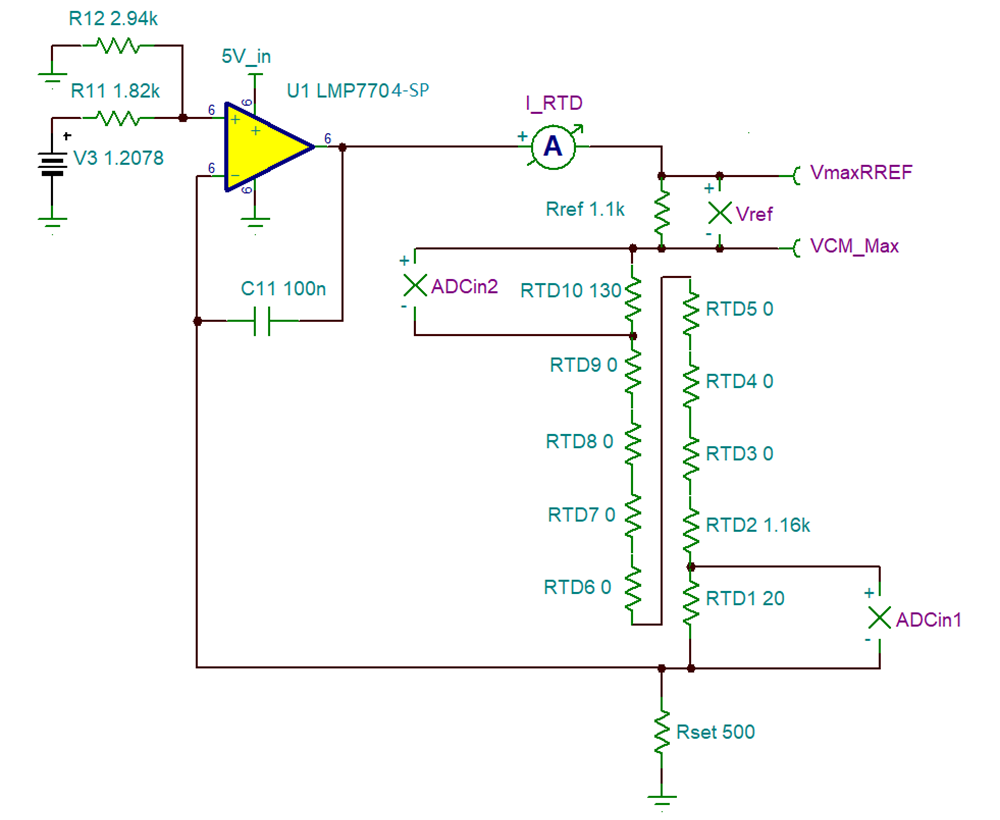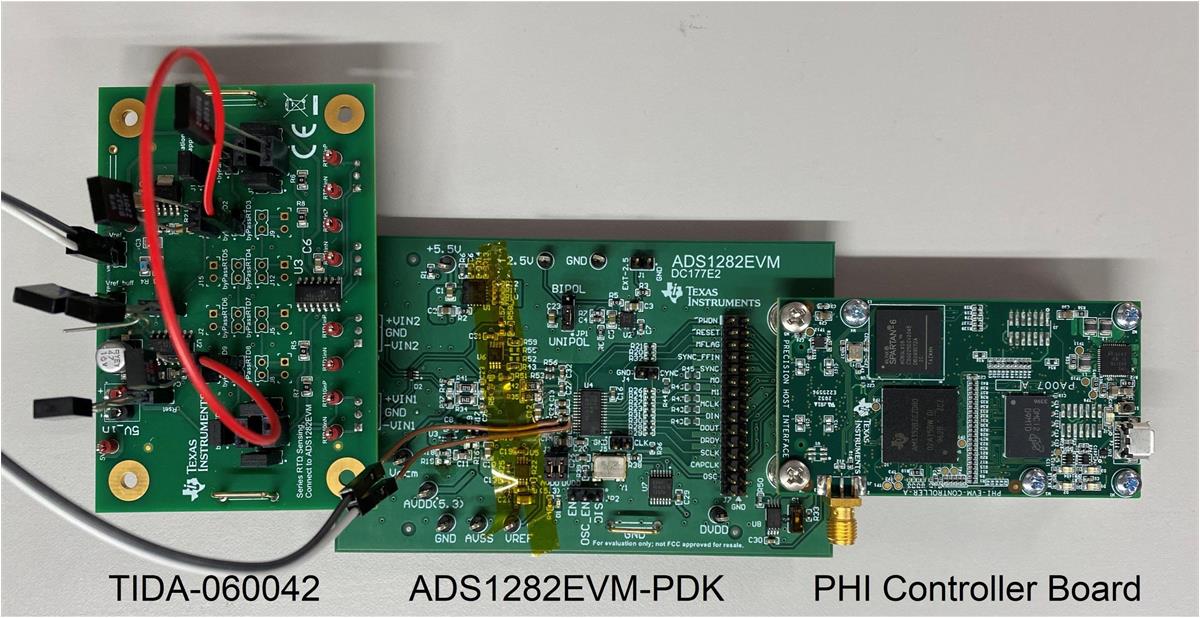TIDUF19 September 2022 ADS1282-SP
3.1 Hardware Requirements
The following three pieces of hardware needed to evaluate the accuracy of the series RTDs temperature sensing system:
- TIDA-060042: the RTD board that connects 10 RTDs in series and outputs differential RTD voltages as well as the reference voltage. Figure 3-1 shows the schematic of TIDA-060042.
 Figure 3-1 TIDA-060042 Schematic
Figure 3-1 TIDA-060042 Schematic- ADS1282EVM-PDK: the ADS1282-SP evaluation module. Modification is needed on the evaluation module such that Analog Front End (AFE) is bypass and Vref is directly provided by TIDA-060042.
- PHI Controller board: this board comes with ADS1282EVM-PDK. The board provides a convenient communication interface to ADS1282EVM-PDK over a USB 2.0 (or higher) for power delivery as well as digital input and output
Figure 3-2 shows an image with all three pieces of hardware connected.
 Figure 3-2 Hardware Setup
Figure 3-2 Hardware Setup